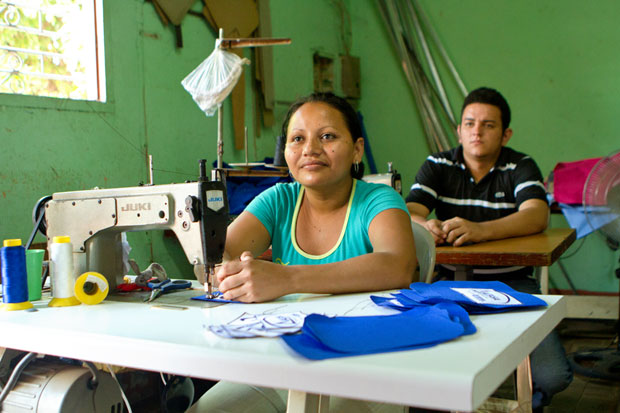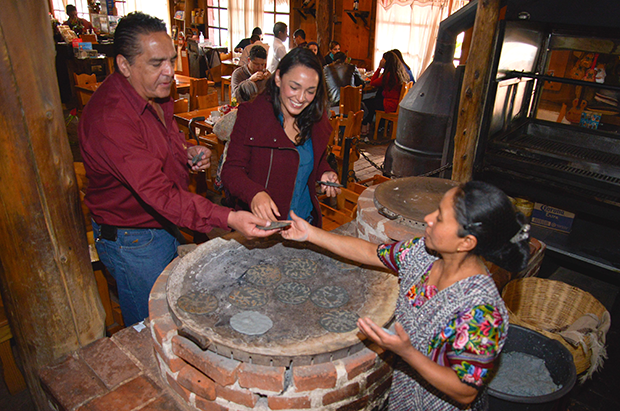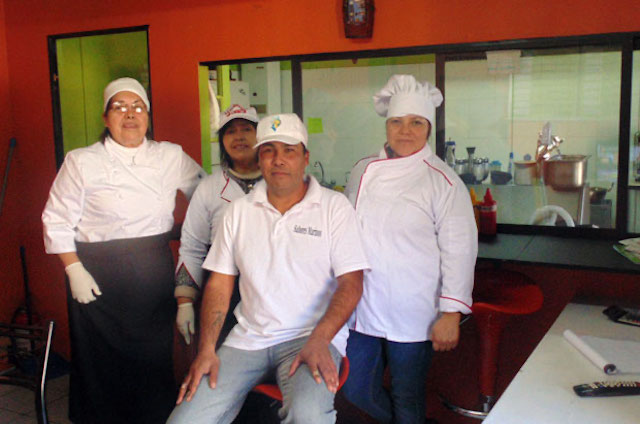Three Unorthodox Lessons for Latin America’s Entrepreneurs
TechnoServe's global entrepreneurship director challenges conventional wisdom about how to help businesses grow.
Editor’s Note: This article was originally published on the World Economic Forum blog. The World Economic Forum on Latin America is taking place in Medellin, Colombia, June 16-17.

Today, Latin America remains the most economically unequal region of the world, and more than 20 million of its young people – one in five – are neither employed nor in school. The region’s urgent challenge is to create more – and better – economic opportunities for its workers.
One of the principal engines for job creation must be the region’s small and medium-sized enterprises (SMEs). Latin America and the Caribbean are home to upwards of 57 million SMEs, and businesses with fewer than 100 employees account for well over half of the region’s net job creation. Nevertheless, SMEs in Latin America are far less competitive than their counterparts in wealthier countries and have enormous untapped potential. If we can help them to grow, they can create millions of new jobs throughout the region. But how can we best help these crucial SMEs?
We often hear “accepted wisdom” like the idea that we should focus our support on new companies, that the key to growth is integration into a corporate supply chain, or that access to finance is the main constraint to overcome. But at TechnoServe, our experience working with Latin American entrepreneurs tells us that we should handle these assumptions with care. Here are three key lessons.

1) It’s not just about age – drive is what really matters
Among investors, nonprofits and government agencies that support entrepreneurs, there is a tendency to focus attention on young SMEs – generally those that have been in operation for five years or less. That makes sense at first glance: age is an easy way to screen businesses, and younger firms do grow at a faster rate than older SMEs, on average. But there are many deviations from that pattern, and a focus on age alone excludes older businesses with high growth potential. In fact, among SMEs participating in TechnoServe’s business accelerator in Central America, older companies’ sales actually grew more than those of younger ones in dollar terms.
Based on this, we arrived at a different approach in selecting which businesses to support. We found that the most important factor is the drive of the entrepreneurs in identifying and seizing new opportunities for growth, no matter the age of their venture. Often, we discover that the lack of access to key managerial skills had prevented these highly driven entrepreneurs from growing their businesses – and as a community, we can address that.
In other cases, new leadership in a family business creates new opportunity for growth. That was the case with Katok, a food company in Guatemala. When Fara Sánchez’s father handed her the reins of the 50-year-old family business, she wanted to grow it, and she immediately enrolled in training from the Impulsa Tu Empresa program – an initiative implemented by TechnoServe and funded by the Argidius, Citi, PIMCO and Walmart Foundations, as well as the Multilateral Investment Fund – which she referred to as “a great help in aspects like finance, cost efficiency, the search for new markets and also infrastructure improvements.” As a result, the business was able to increase its workforce by 21 percent.

2) It’s not just about corporate buyers – opportunities also exist in other markets
It is often said that SMEs grow fastest by selling to large corporations. Again, there is some truth in this: the volumes required by large, corporate purchasers can propel growth for small businesses, and such an approach can work well for many of them. However, there may be downsides to such a strategy. SMEs have little bargaining power over large corporations, and large buyers can demand that small businesses operate with very small margins. Supplying those large purchasers also requires huge amounts of working capital and more sophisticated managerial skills, which not all SMEs can immediately access.
On the other hand, small businesses can frequently look to grow by serving their own communities or other niche markets that are rarely served well by large companies. SMEs selling to these communities are often able to scale up growth by replicating their operations in other, similar ones. For example in Chile, the Maipo Salud chain of medical clinics has grown by targeting modest communities around Santiago, providing primary health services in areas that might not otherwise have them.

3) It’s not just access to finance – it’s how you use it
Small business owners throughout the region often mention that their growth is constrained by the difficulty of accessing the amount of credit that they need. In fact, in a recent poll of entrepreneurs conducted by Nicaragua’s chamber of commerce and the International Labor Organization, access to finance was the most commonly cited challenge.
Certainly, there is work to be done in improving the supply of credit; however, there is also work to be done on the demand side, helping entrepreneurs to better understand their real financing needs and harness the capital that they can access. We find that entrepreneurs often need less capital than they think. Rather than focusing exclusively on access to finance, entrepreneurs should create a sound growth strategy, with affordable stages, and develop the managerial capabilities to implement it.
That’s what Mauricio Vilchez did. Before joining the EMERGE program – an Anglo American-TechnoServe collaboration – the Chilean fishmonger had a very ambitious plan for starting a seafood restaurant, but was stymied by his inability to access the large amount of financing he’d need to put the plan into action. As part of the EMERGE program, TechnoServe advisors worked with Mauricio to develop an incremental growth strategy that could be implemented by introducing new business enhancement practices and smaller amounts of capital that he could easily access. In less than a year, he increased sales fourfold and hired new workers, and now he has been able to finally open his restaurant.
New ways of thinking are vital for tackling the old challenge of job creation. Nonprofits, governments and investors can play an important role by identifying entrepreneurs with drive and perseverance and equipping them with the skills they need to seize the market opportunities that are attainable and attractive for them.



